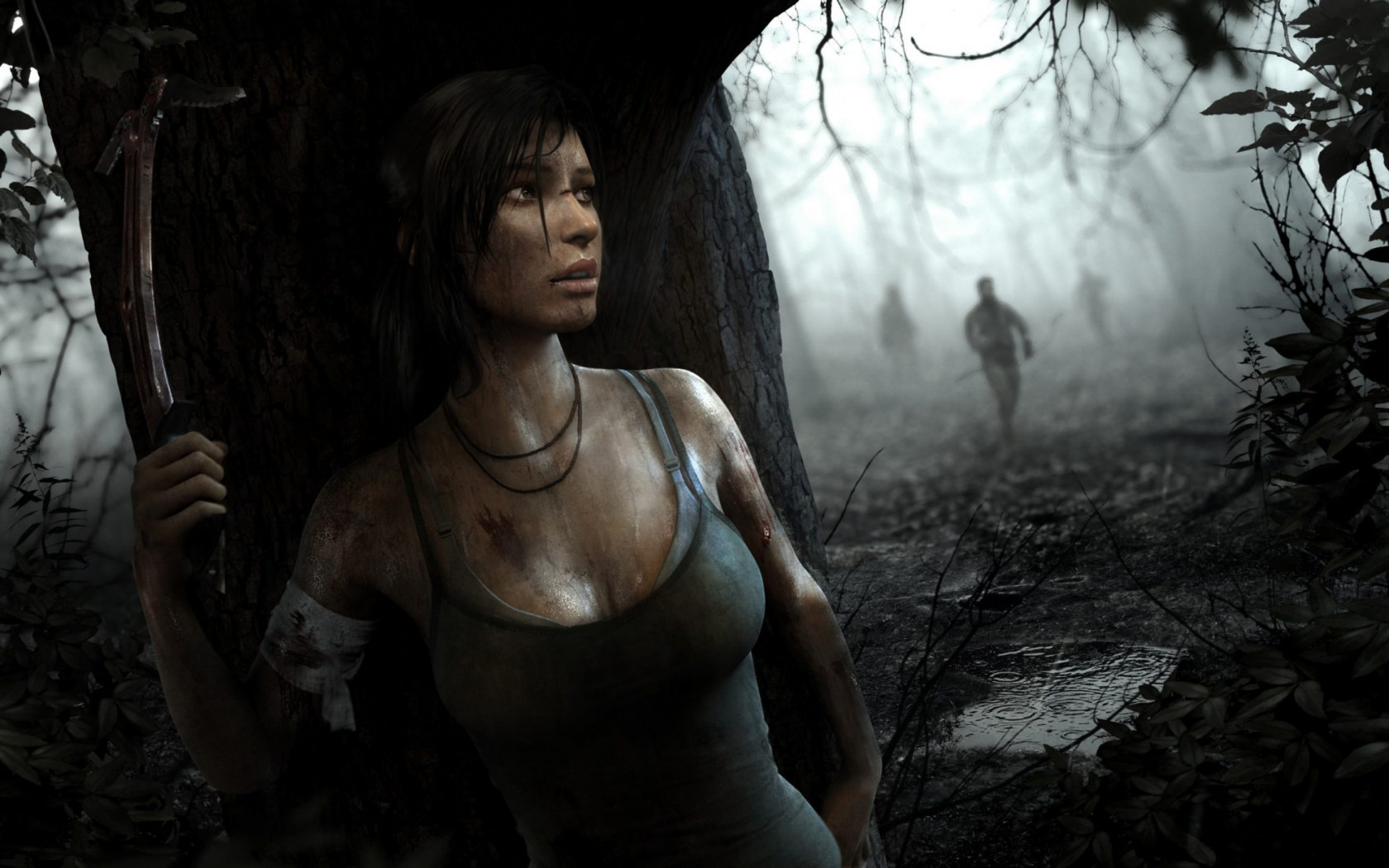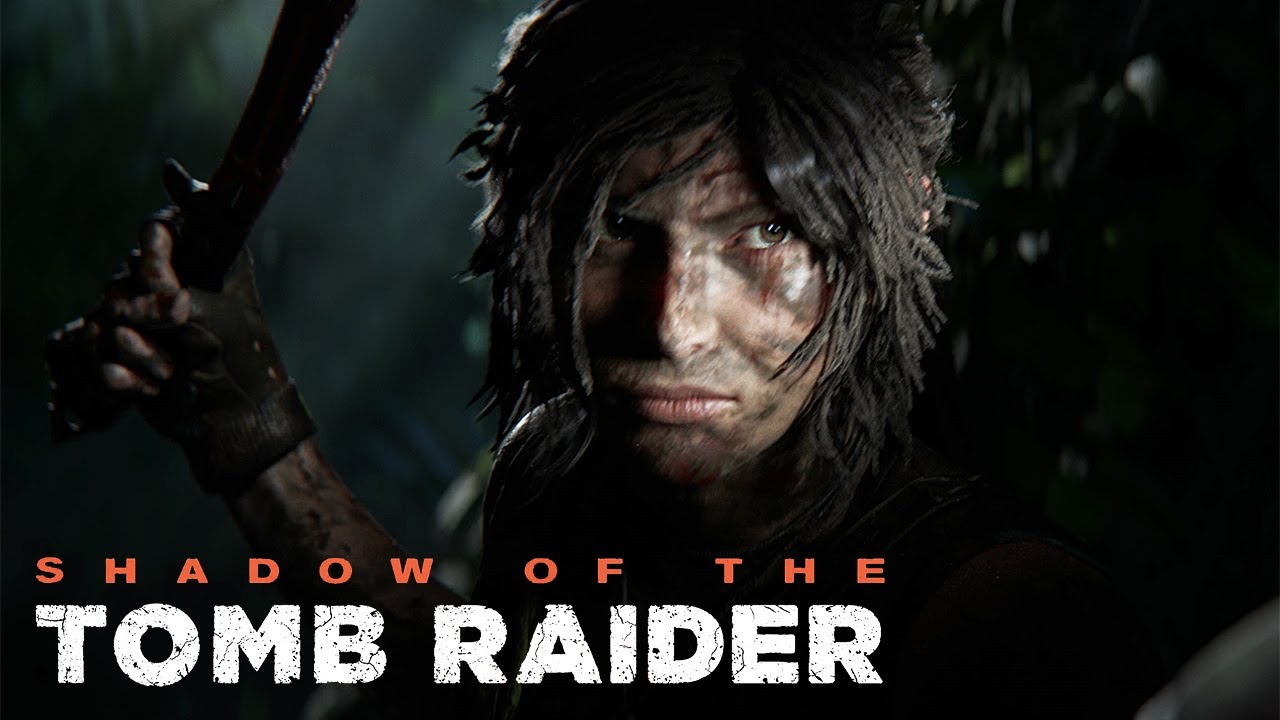GamesBeat: As far as the gameplay, did you feel like you wanted to change things quite a bit from game to game?
Johnston: We’re always looking at evolving. The core pillars that we looked at evolving—you can start with combat. In this jungle environment, Lara has to become an apex predator, and really use the jungle to her advantage in order to take out Trinity. She’s outgunned. She’s outnumbered. She’s not made of Teflon. You’ll see her use new stealth mechanics. For example, she can cover herself in mud as camouflage. Once you engage in combat, Lara and the player are able to retreat and wait for things to reset, and then re-engage, which is new to the franchise.
We’re also looking at how we’ve evolved traversal. The area we looked at is underwater exploration. In the demo you played, you see there are lots of areas to experience. There are claustrophobic areas. We like exploring the idea of risk versus reward. How far are players willing to go to find artifacts and items they’re looking for? They don’t know where the next populated area is going to be.
Last, there’s how we express tombs. In Rise we had these very Biblical-style tombs. In Shadow, we’re taking players to the very opposite, the subterranean, these deep, terrifying places. These tombs were built by a culture that worshipped fear and human sacrifice. The puzzles are
going to be bigger and deadlier than ever.

Above: Lara hides in the shadows and strikes fear in her enemies.
GamesBeat: The leaves that were part of that wall, you could blend into them. That seems like a new addition. The jungle affords more positions where you can hide and be stealthy.
Johnston: Yeah, Lara will be able to cover herself in mud as well. That’s another tool she can use. You didn’t get to play this scene, but you saw it today, where you press X and she covers herself in that mud patch. It allows her to move through the world without being detected
easily. Also, there’s a lot more verticality to the jungle. Lara’s up in the canopy, off the ground.
She’s moving all over the place in the most strategic way in order to take out the Trinity soldiers.
GamesBeat: It looks like you still have a lot of gunfighting, though.
Johnston: As far as the gameplay pillar balance, it’s comparable to the previous games. We try to find the right match of puzzles, exploration, discovery, and combat situations. You can expect a similar experience to what you had in Rise of the Tomb Raider and Tomb Raider 2013.
GamesBeat: What sort of impression would you like gamers to have of Lara at this point?
Murray: I hope they come away understanding her as a complete person. They’ve shared some of her journey, experienced some of her conflicts. They’ve had a chance to think through some things and consider how they would handle those themselves.
Johnston: One thing I like about Lara is that she’s a relatable character. Many different players can find many different ways to attach themselves to Lara. Ultimately, they’re going to see themselves that Lara isn’t a perfect person. She makes mistakes. That makes her a more
relatable character.

Above: Lara Croft and Jonah in Shadow of the Tomb Raider.
GamesBeat: The fight she had with Jonah at the end of this episode here, it seemed to draw out a conflict. She wants to save the world and he wants to help individual people.
Murray: He wants to save the world in a different way, yeah.
Johnston: It’s exploring Lara, too. You’re seeing that obsession in her. She thinks she’s the only one that can stop this. She’s the only one who can save us. But at the same time, she doesn’t take a second to reflect on what she just did. Jonah’s that moral compass. He helps Lara realize that there are things bigger than her that she needs to acknowledge. Because they’re best friends, he can speak to her in a way that no one else really can.
Murray: In this game we see her find her way from that hardcore, athletic perseverance – I can do anything, climb anything, go anywhere – toward a kind of emotional perseverance. She can have this big collective goal and figure out a way through to that.
GamesBeat: Were there any particular inspirations for how you wanted to portray that?
Murray: We draw a lot of elements from life. Often, when you look around at the world through a character’s eyes, you discover different things.
GamesBeat: It reminded me a little of Schindler’s List, the very beginning of that movie. The quote about “whoever saves one life, saves the world entire.”
Murray: That would be well aligned with Jonah’s perspective, yes.
Johnston: It’s not just Lara and Jonah, too, but also the antagonist in this game, Dr. Dominguez. He isn’t the typical Tomb Raider antagonist. Usually Lara needs to the artifact first before some other guy and it’s a race against time. This time she does just that, and she kicks off the
apocalypse. Dr. Dominguez comes in and he’s not the typical twirling-his-moustache kind of villain. He’s the hero of his own story, if you think about it from his own perspective.
GamesBeat: He has to fix what she just did.
Johnston: Right. Understanding that these decisions she makes have world-ending implications, because she’s so powerful now.

Above: Lara Croft doesn’t mind putting mud on her face in Shadow of the Tomb Raider.
GamesBeat: That conflict with Jonah seems like it reinforces the sensation that you want to have a conflicted Lara.
Murray: It’s not that we’ve been trying to add conflict, exactly? We just looked at all of these ingredients that came out of the previous games. Jonah has always been there backing her up.
He’s also the one person that’s able to call her out. Here we have this situation where she’s just done something, and we had him react to it honestly. This is what comes out of it.
GamesBeat: The flood scene was a lot of fun.
Johnston: We call those our “OMS” moments. It stands for “Oh My Shit.” The kind of cinematic, blockbuster moments in the game and the franchise, the things that make that wrapper on top of everything else the player is experiencing.
GamesBeat: Is that some of the pattern here? You have the buildup to these things, and then some down time afterward.
Johnston: Structurally, it’s a tool we’ve used very well for Tomb Raider. Players can continue to expect the style that’s helped deliver this really cinematic action survival experience.

